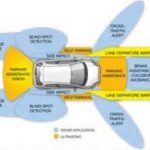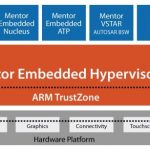The U.S. Department of Transportation (USDOT) is holding the first meeting today of a new advisory committee focused, in its own words: “on automation across a number of modes.” The committee, made up of an array of experts from a variety of fields, is “to immediately begin work on some of the most pressing and… Read More
California Rules the Road
California’s influence on the global automotive industry remains intact at the start of 2017 in spite of the state’s strict licensing for autonomous vehicle testing on public roads. California managed to chase Uber away with that licensing requirement, but in the process the state has established a benchmark for… Read More
Tool Trends Highlight an Industry Trend for AMS designs
Archaeologists often use tools found in digs as a major indicator of trends in civilizations. The same could be said for trends in design, though we don’t have to reconstruct these design trends – we tend to see them ahead of us.
The trend in this case is the growing importance of sensors in designs and there’s no better example of that… Read More
NVIDIA on a Tear at CES
Jen-Hsun Huang, CEO of NVIDIA, gave the opening keynote at CES this year. That’s hardly surprising. From a company that operated on the fringes of mainstream awareness (those guys that do gamer graphics), they finished 2016 as the top-performing company in the S&P 500, returning revenue growth of 35% (forecast). That’s startup… Read More
Tesla’s (and Uber’s) Teflon to be Tested in 2017
For the past two years the impression has been spreading that Tesla Motors can do no wrong. (I can’t really say the same for Uber after the recent San Francisco licensing debacle.) There is no question that Tesla’s legal department is growing by the month as fights persist over opening stores and forestalling liability… Read More
Will Lawsuits Stall Automotive AI?
The roster of automotive artificial intelligence (AI) initiatives is growing rapidly with Softbank working with Honda on the Emotion Engine for the Neuv self-driving commuter vehicle, IBM’s collaboration with General Motors and BMW, and, now, reports of Microsoft bringing AI to Volvo in the form of Cortana. It was Google… Read More
Crowd-Sourcing Morality for Autonomous Cars
Questions are being raised on how autonomous vehicles should react in life-or-death situations. Most of these have been based on thought experiments, constructed from standard dilemmas in ethics such as what should happen if the driver of a car or an autonomous car is faced with either killing two pedestrians or killing the occupants… Read More
Vox Clamantis in Deserto
If you are headed to Las Vegas for your New Year’s celebration, the annual Consumer Electronics Show or just a good time, beware! According to some estimates Nevada is the fourth most dangerous state for pedestrians and Las Vegas is ground zero for what the city calls an ePEDemic of roadway fatalities.
It’s difficult… Read More
They Kill Pedestrians, Don’t They?
I came upon the scene of a crash investigation yesterday afternoon in my hometown of Herndon, Va. A mother and two children were hit by a 20-year-old motorist making a right turn at an intersection. I did not see the crash, but I strongly suspect the motorist was looking left to anticipate oncoming traffic and never noticed the pedestrians… Read More
Real Time Virtualization, How Hard Can it Be?
My first exposure to running something virtual on a computer was when I decided to run the Windows OS on my MacBook Pro using software provided by Parallels. With that virtualization I was able to run the Quicken app under Windows on my MacBook Pro, along with the popular Internet Explorer web browser. The app performance on virtualized… Read More




Quantum Computing Technologies and Challenges